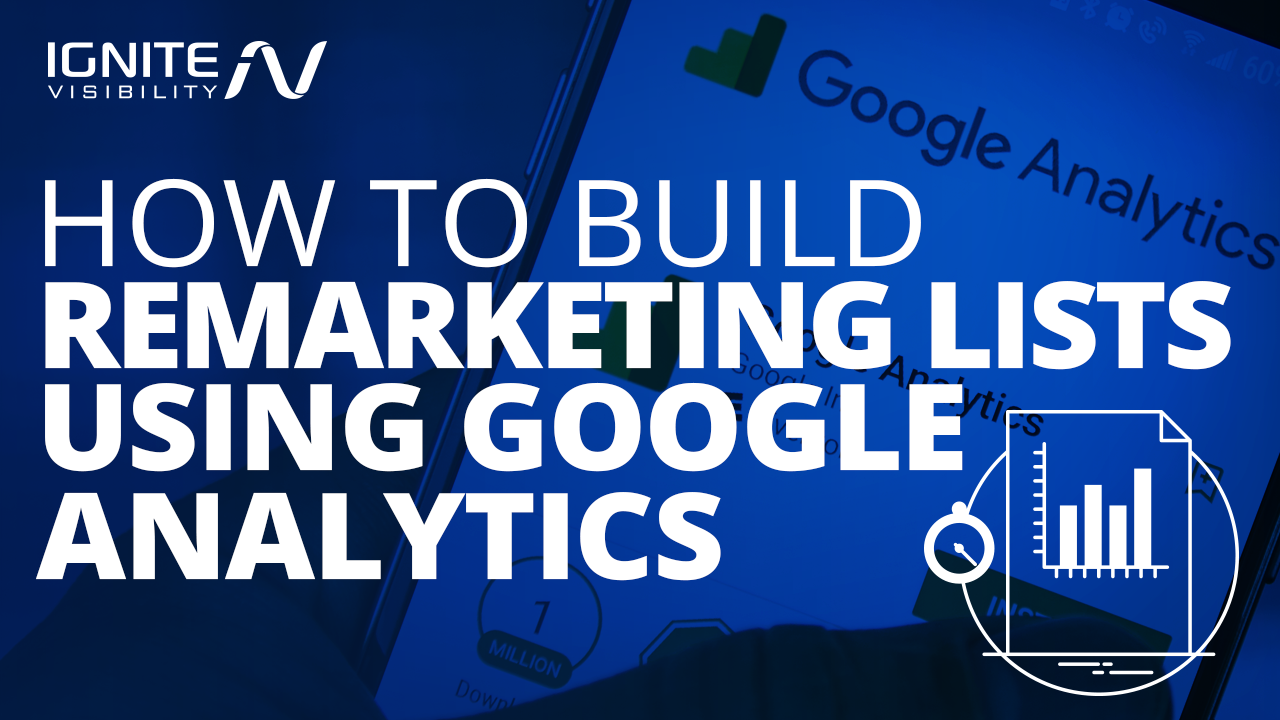The Advantages of Using Remarketing In Google Analytics
The Advantages of Using Remarketing In Google Analytics
Blog Article
Using Remarketing in Google Analytics: A Comprehensive Guide
Taking advantage of remarketing in Google Analytics uses services a tactical edge in getting to out to possible consumers. This guide will certainly shed light on the necessary steps included in using the full potential of remarketing in Google Analytics, leading to boosted advertising end results.
Recognizing Remarketing in Google Analytics
Remarketing in Google Analytics permits organizations to tactically target users who have actually formerly connected with their web site or mobile app. By leveraging data from Google Analytics, companies can develop personalized remarketing listings based upon user actions, such as web pages checked out, actions taken, or specific goals accomplished. This powerful tool allows businesses to re-engage with customers that have shown interest in their services or products, ultimately increasing the likelihood of conversion.
Recognizing the different sorts of remarketing approaches is critical for an effective campaign - What Is “Remarketing” In Google Analytics?. Google Analytics supplies numerous options, including standard remarketing, vibrant remarketing, and remarketing checklists for search ads (RLSA) Each type offers an one-of-a-kind purpose and can be tailored to meet particular advertising and marketing purposes
Furthermore, assessing the efficiency of remarketing campaigns is necessary for optimizing outcomes. Google Analytics supplies useful insights into the efficiency of various remarketing techniques, allowing companies to make data-driven decisions and improve their targeting strategy. By continuously adjusting and checking remarketing efforts based on analytics information, services can optimize ROI and drive success in their marketing efforts.
Establishing Remarketing Projects

After establishing target market checklists, the following action is to link Google Analytics with Google Ads. By linking these 2 platforms, companies can seamlessly move target market lists from Google Analytics to Google Advertisements for remarketing functions. This combination permits for more specific targeting and better project performance.
As soon as the accounts are linked, companies can develop remarketing projects in Google Ads utilizing the audience lists previously defined in Google Analytics. These projects can be tailored with certain ad creatives, messaging, and bidding approaches to effectively re-engage with past visitors and drive conversions. By adhering to these steps, businesses can utilize the power of remarketing to boost their marketing initiatives and increase ROI.
Using Target Market Division Approaches

Predefined sectors in Google Analytics enable you to swiftly evaluate common audience groups like brand-new individuals, returning users, or customers that finished a specific goal on your site. Custom sections, on the other hand, enable you to create unique sectors based upon particular standards that are essential to your service purposes. Dynamic remarketing checklists immediately change based on customer behavior, revealing customized ads to customers that have actually engaged with your website particularly means.
Analyzing Remarketing Efficiency Metrics
Upon examining the performance of remarketing projects in Google Analytics, the evaluation of key performance metrics provides useful understandings right into target market engagement and conversion prices. By delving Look At This right into metrics such as click-through prices (CTR), conversion prices, expense per acquisition (CPA), and return on advertisement invest (ROAS), marketing experts can evaluate the success of their remarketing efforts. Assessing these metrics enables marketing experts to maximize projects, fine-tune audience targeting, and allocate budgets efficiently to enhance total remarketing performance.
Maximizing Remarketing Approaches
When refining remarketing strategies in Google Analytics, concentrating on audience segmentation is paramount for achieving campaign success. By separating your target market right into details sections based upon their actions, demographics, or interests, you can tailor your ads better to each group. This targeted technique boosts the likelihood of involving users that have actually currently shown passion in your services or products, causing higher conversion prices.
Another essential facet of maximizing remarketing approaches is constantly screening and refining your campaigns (What Is “Remarketing” In Google Analytics?). A/B screening various ad creatives, messaging, or offers can aid you determine what reverberates finest with your audience and drives one of the most conversions. By examining the performance of these tests in Google Analytics, you can make data-driven choices to optimize your remarketing initiatives even more
Moreover, leveraging dynamic remarketing can dramatically improve your campaign results. This feature allows you to reveal personalized ads to individuals based on their past communications with your internet site, showcasing items or services they have actually previously checked out. By supplying tailored material to users based upon their rate of interests and habits, dynamic remarketing can help boost engagement and drive conversions.
Final Thought
To conclude, using remarketing in Google Analytics is a tactical approach to target individuals who have previously involved with a website. By developing tailored audience listings and using visite site audience division approaches, organizations can optimize remarketing campaigns for boosted conversion prices. Assessing efficiency metrics and continually optimizing strategies are crucial for maximizing the effectiveness of remarketing initiatives.
Google Analytics supplies different alternatives, including conventional remarketing, dynamic remarketing, and remarketing checklists for search ads (RLSA)After establishing up target market checklists, the following action is to connect Google Analytics with Google Advertisements. By connecting these two platforms, organizations can seamlessly move target market lists from Google Analytics to Google Ads for remarketing purposes.When the accounts are linked, companies can develop remarketing projects in Google Ads making try this out use of the audience details previously defined in Google Analytics.When refining remarketing strategies in Google Analytics, focusing on target market division is critical for achieving campaign success.
Report this page